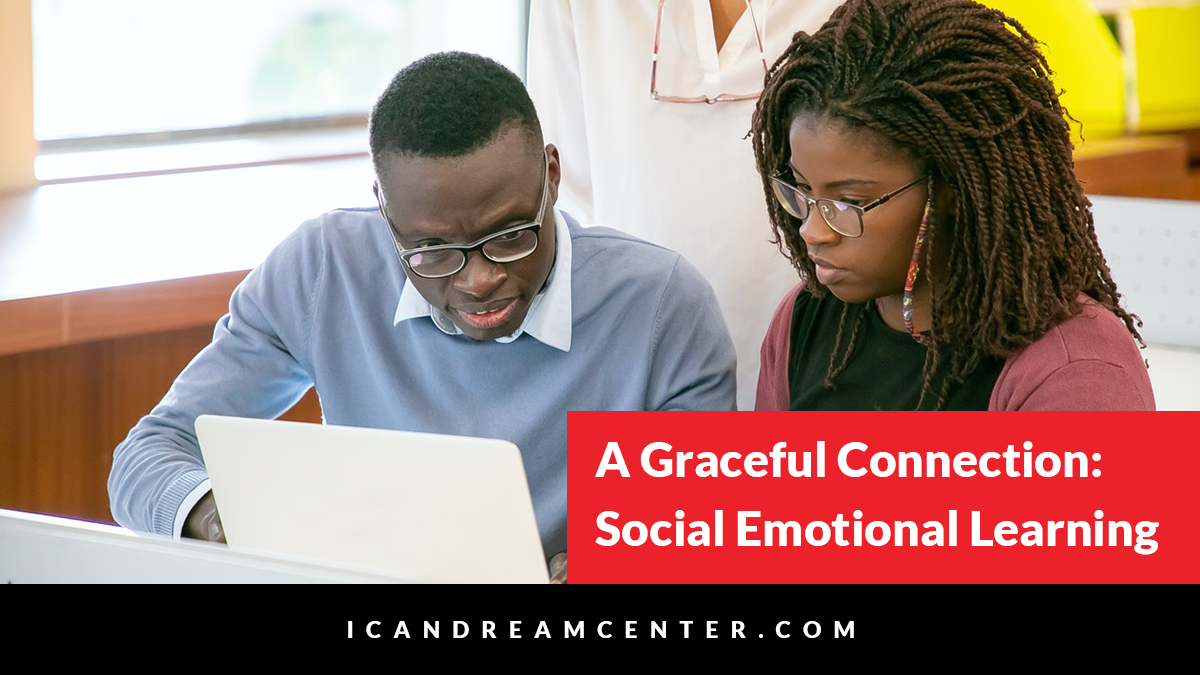
A Graceful Connection: Social Emotional Learning
What is Social Emotional Learning? What does it look like?
These questions are commonly asked by parents, yet they are commonly demonstrated by students daily by their interactions and interpersonal relationships established in the classroom with their instructors and peers. According to the ‘Committee for Children,’ Social Emotional Learning (SEL) is, “the process of developing the self-awareness, self-control, and interpersonal skills that are vital for school, work, and life success.”
SEL provides a positive foundation to help students mitigate challenges socially and emotionally while learning; this approach to learning has an everlasting impact throughout their life and approach to coping with daily challenges.
Many people will tell you a definition of what SEL looks like, but I think it is easier to pick a word and describe SEL yourself. At the iCan Dream Center, we have core values that are the guiding principles to our work: connection, grace, passion, super-serve, accountability, and relevance. My time as an instructor at the iCan Dream Center has shown me two words that stand out the most in SEL– “Connection “and “Grace.”
Connection is defined as, “a relationship in which a person, thing, or idea is linked or associated with something else,” (Oxford Language Definition). Grace is defined as, “courteous goodwill” when it comes to having the compassion to have positive interactions and reactions to others.
Connection and grace are two key core values of the iCan Dream Center that highlight,
“We are a staff, not a family” and “Love students through their transitions.”
I make it a point to apply “Connection” in the classroom with my students. I treat them as family in my approach to how I process not only their educational needs, but their emotional needs as well.
I also love them through their transitions, and provide “Grace” so they know that even when they have a bad or “challenging” day, tomorrow can always be better. As educators, we must humble ourselves at times and show students that we are human to create a better connection. When we step back and take a humanistic and empathetic approach, we often find that we build stronger connections to our students. If you always take an authoritative approach to your interactions with students, you can hinder their growth.
So how does Social Emotional Learning connect to the values of “Connection” and “Grace?
Connecting with a student in the classroom, and providing them grace is a great way to practice the merging of SEL to the values of connection and grace. When working on assignments with students in the classroom utilizing repetition is a great practice. Just like practicing a math equation and repeating the lessons in your head (i.e. multiplication-tables), you must work on your self-discipline as a student and repeat the practices/skills to remain disciplined. When teachers recognize that a student is working through transitions and assists them, then the student is available to address the needs of their social emotional growth. This is the practice of making connections, as you’re connecting the student’s needs and actions to their social emotional growth. Grace is being demonstrated in the assistance of helping the student develop these skills.
Growth can be demonstrated in various forms, but the best thing to do is, “Remain in the trenches” with your students. What does “Remaining in the trenches” look like, you ask?
- Asking thought provoking questions
- Correcting students appropriately in front of the class or in private (Be cognizant of your words)
- Always have a great attitude even when times are trying.
A student is more gracious towards an educator when they know they aren’t being labeled as a problem. As educators, we must have a forgiving heart and a sharp mind so that we may be able to combat any behaviors that stop our students from being great.
Finally, when we are proactive in the classroom as educators, when we hold the students to a certain standard, we are nurturing their social emotional growth. There will be times when you have to have the tough conversations but those conversations lead to the student being more self-aware. We should never let our emotions get in the way of any students’ growth and always put ourselves in the student’s shoes because we all were once there.
I wish you all an amazing journey and I pray for the growth of you and your students!
Be Blessed,
Mr. D.
